Staff Profile | Taryn Coulson
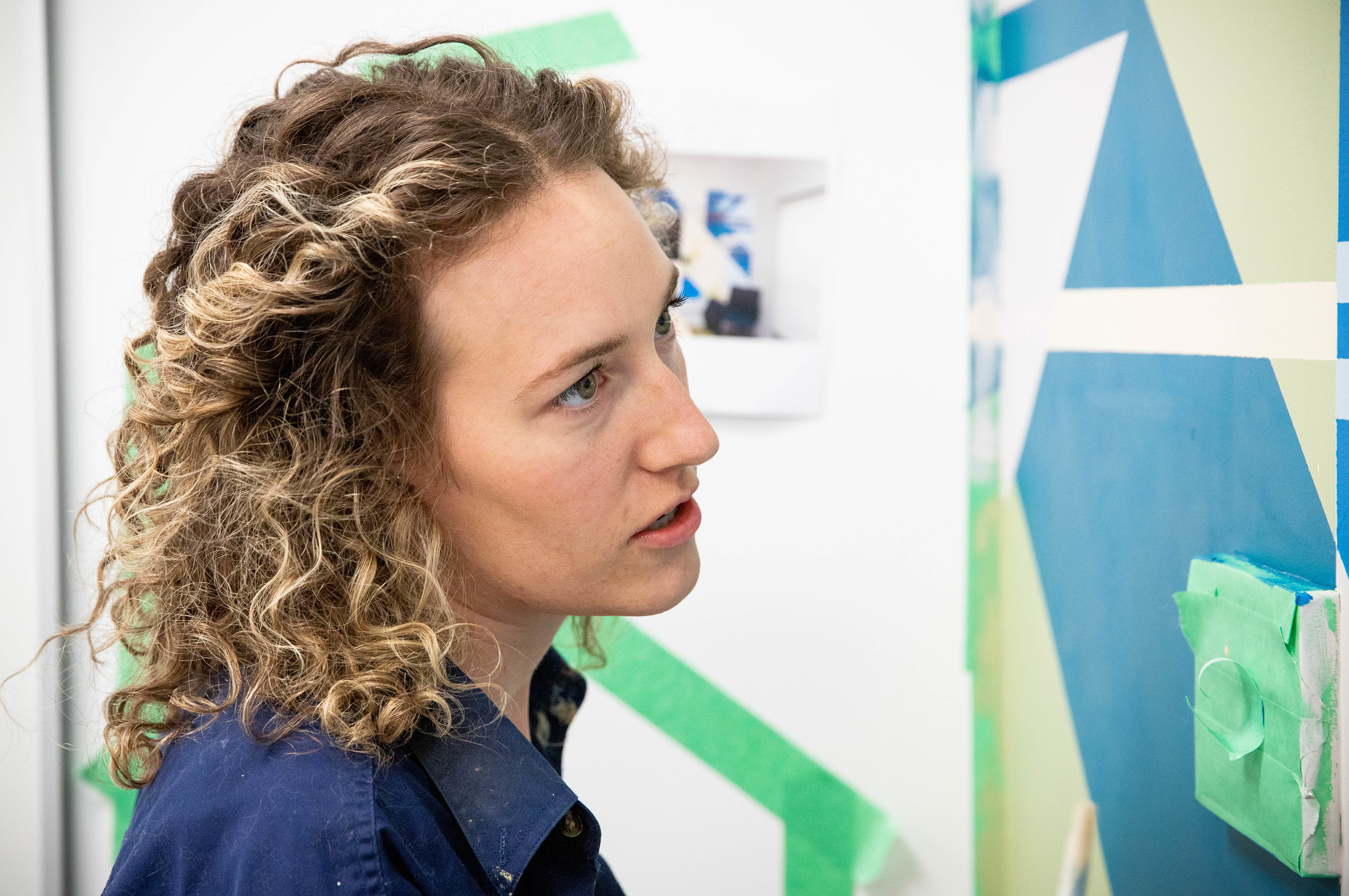
Posted on | Updated
The painter and ECU Human Resources Administrative Assistant talks intuition, abstraction, imperfection and digital information.
Painter Taryn Coulson, who works in Emily Carr University's Human Resources department, was recently finishing up a new mural in the meeting room of her department's offices. She put down the paint brush momentarily to answer a few questions about her practice and talk about her influences, her goals as an artist, and the relationship painting has to a world accustomed to consuming digital imagery at a breakneck pace.
--
Talk about your paint practice. How do your compositions emerge? Take me through the process.
I like to think of my practice as creating and solving puzzles for myself through painting. Each piece starts as a neatly planned grid structure, and a small selection of colours. Working through the piece, each grid is built up while at the same time being broken down. I’m reliant on the process of adding and subtracting paint, and repeating patterns, shapes and colours on the canvas to let each composition emerge and reveal itself through my actions.
I never really know what the ‘finished’ work will look like when I begin. I’m fascinated with the possibilities that open up and the variations that occur as a simple action gets repeated again and again. Although the work appears orderly -- and does rely on a rigid structure to begin – the work of completing each piece is quite an intuitive process. Every time I add another colour, or make a new mark, that action informs the rest of the painting. It is sort of a chess-like decision making process, contemplating each move based on its potential outcome.

The more built-up the painting becomes, the slower its completion takes, since I’m really considering each action and exploring how that action might throw off the delicate balance I’ve already achieved. It’s quite scary a lot of the time which is funny to think about, since so much of my work is layers upon layers of paint, and I could just keep adding and taking away if that’s what the painting needed. It does feel like a house of cards though, knowing each time I add more paint, I could potentially knock everything down and have to start another process of layering to rediscover that balance. Recognizing when to stop is the most important (and still challenging) part for me.
Usually the paintings tell me what to do; I just need to be willing to make those moves and not be too precious about it.
Can you talk a little about what your aims are when you paint? Where are you getting your inspiration or formal direction?
The hard-edge geometric style that I currently work in was all inspired by a Bridget Riley painting. So, she’s a huge influence for me.
But traditionally, hard-edge abstraction prioritized the formal elements of painting, and downplayed any personalization or showing of the artist’s hand. My paintings show hints of the handmade nature of their creation (texture from the brush, smears from tape, drips of paint and pencil lines).
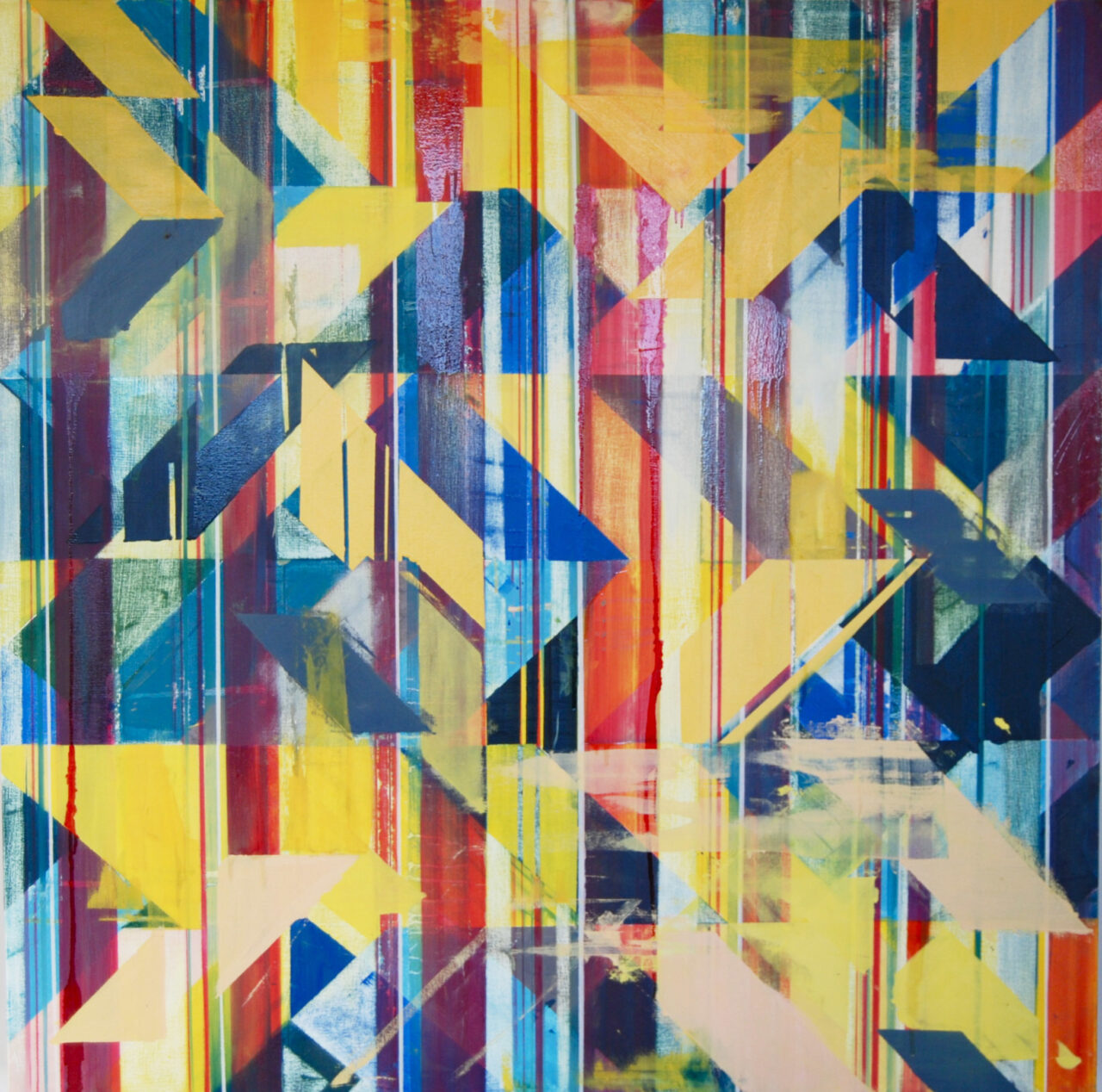
Personally, I find when I view the hard-edge geometric style through a contemporary lens, it suggests digital information, or a representation of visual data. I’m interested in the way we consume visual information; rapidly, virtually, scrolling through a screen constantly. Despite our ability to access any piece of art or image instantly, I find there is a palpable desire for tactile experiences and a slower pace; a kind of romanticising of the analogue. There’s a reason the world has turned to sourdough during quarantine – there is such intimacy and satisfaction in getting your hands dirty and creating a thing from scratch.
With that in mind, my paintings are constructed through layers and patterns that mimic this high-speed consumption of imagery, while pushing back at that rapidity via the labour and aesthetic linked to their hand-painted construction. This tension between the virtual and the handmade continues to inspire me.
I had a professor in university who told us if we can get someone to spend more than 30 seconds with a painting (the average amount of time a person usually spends with a work of art) then we were doing something right. That has stuck with me ever since.
I want to create paintings that invite you in, slow you down. I want to challenge that notion of rapid consumption, and encourage the viewer to lose track of time exploring the painting.
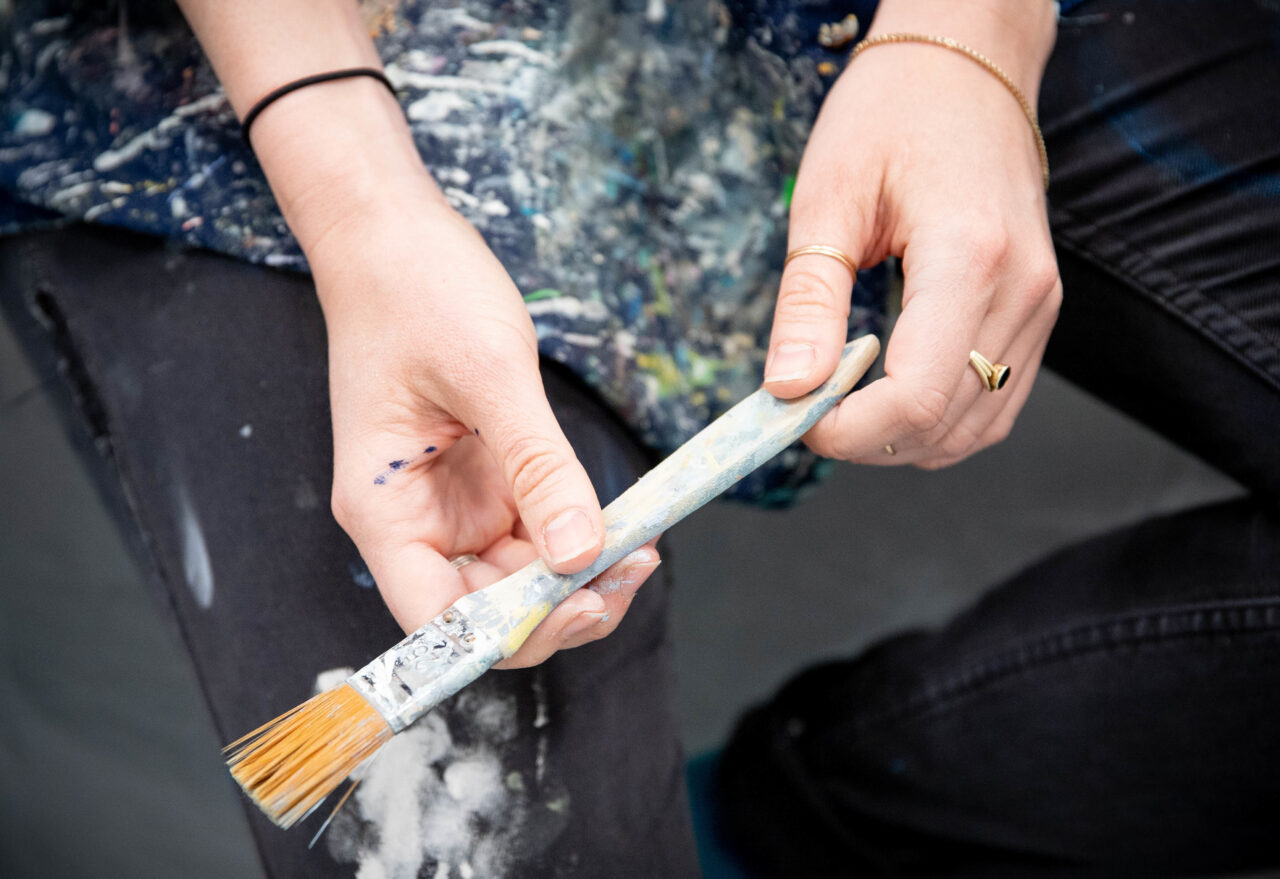
This isn’t your first mural; what are some of the challenges or opportunities that you most look forward to when approaching a composition of this scale? Are they different this time around than they have been in past murals?
Since I started working as an artist, I’ve really enjoyed working on a fairly large scale (most of my paintings are 4’ x 4’). There’s something I really like about the physicality of working at that scale; how the canvas is almost the same span as my arms.
The first mural I made, however, was pretty overwhelming. I only had three days to complete it, so I had to base it on a painting I’d already finished. This totally goes against my usual process (wherein I never truly know what a painting will look like until it's complete).
For the current mural at ECU, I went back to my usual process, starting only with the scale of the grid and the colours I would use, not knowing how the finished piece would look.
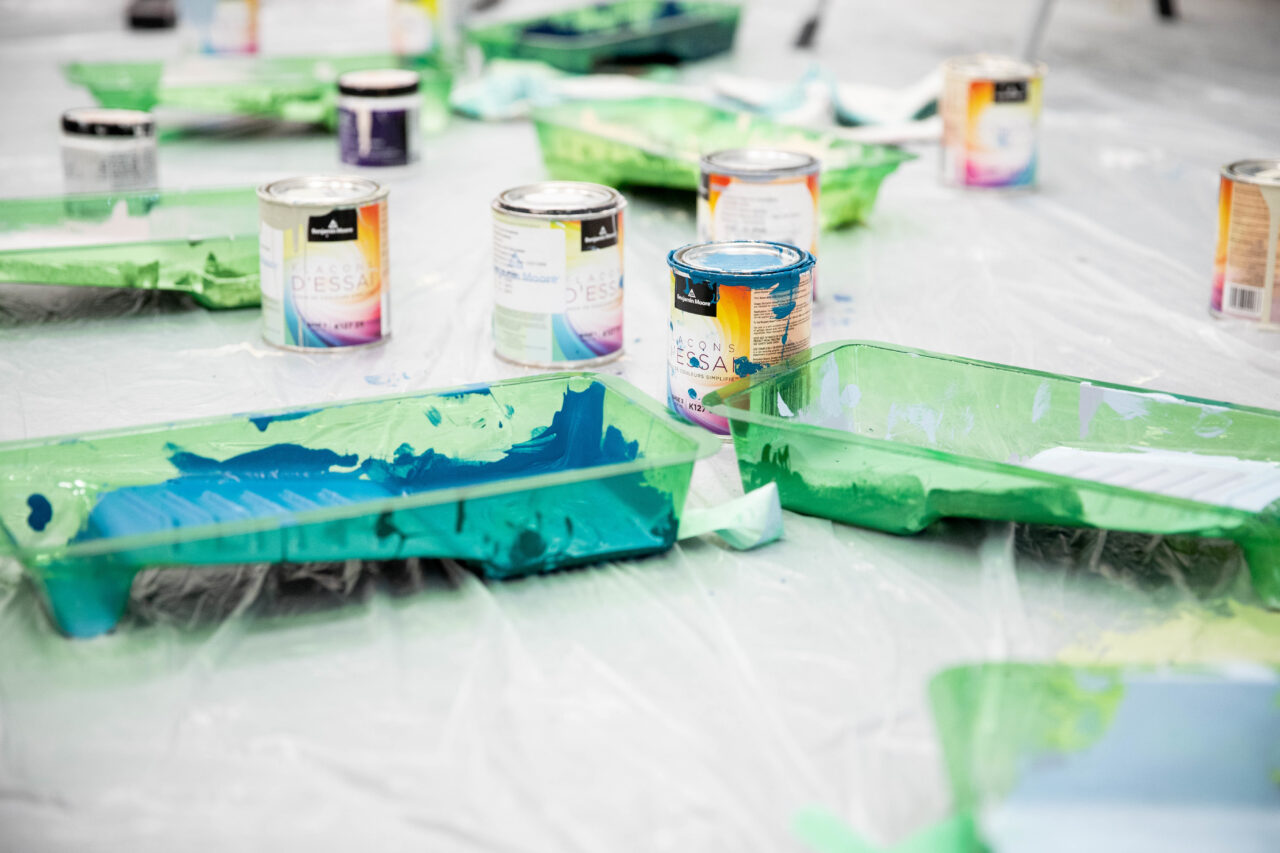
I love the challenge of solving the puzzle through paint and getting the piece to where it feels balanced yet still dynamic. The room isn’t huge, but it’s quite a large wall space. So, I wanted to keep it somewhat simple while still having enough going on in the composition to make things interesting. Keeping things calm yet lively. That idea of balance among seemingly contradictory concepts is really the major theme throughout all the work I make (gesture and logic, pattern and disorder, buildup and breakdown, illusion and reality, repetition and variation, logic and chance, intention and error, memory and fact, beauty and failure).
Can you talk a little more about the role imperfection or happenstance plays in your work?
A big part of my work is the imperfection. My painting practice really began as I attempted to recreate images that my wonky inkjet printer had produced. My attempts at painting those images were just full of errors, and there was a level of absurdity to it that I just embraced.
The fact that I still choose to create abstract hard-edged paintings by hand when I could so easily create similar images digitally is somewhat absurd. So, I try to draw attention to that absurdity by leaving things like brush strokes or streaks/leaks of paint in the finished work.
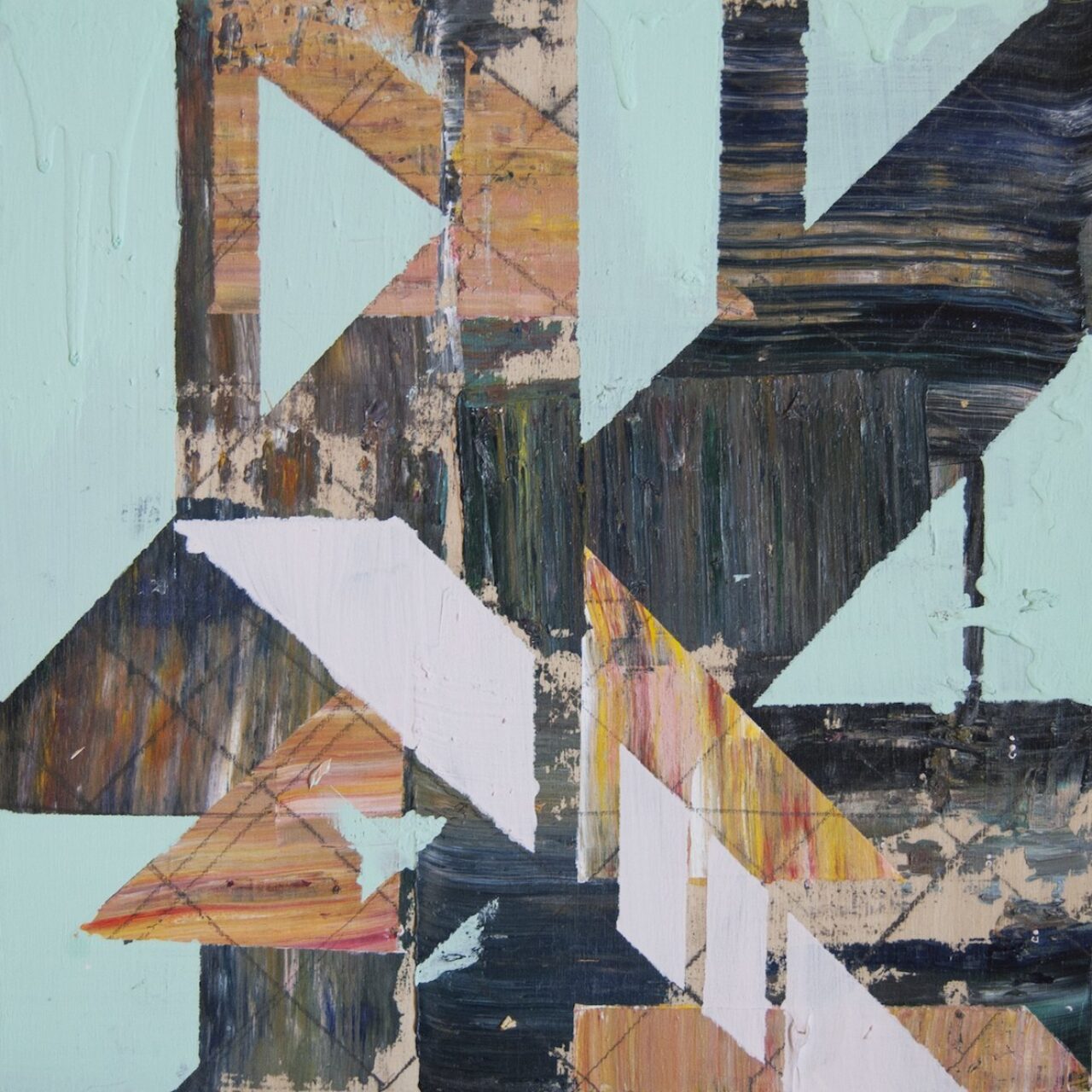
I also like the idea of challenging the viewer into wondering a bit: “Oops, she forgot a piece of tape on the canvas, or missed erasing that pencil line.” And then when those little details repeat themselves, a dialogue around intentionality vs. error emerges.
I don’t think imperfection will ever not be a part of my work. It feels especially important to my ability to continue making abstract paintings. I’ve had experiences where I’ve shared that I’m an abstract painter and people say, “I don’t really understand abstract art,” implying that they feel they’d need to go to school or study art to wrap their heads around it.
So, I want to make paintings that feel accessible to folks who are intimidated by abstract art. Perhaps keeping imperfections in my work is a way of inviting that. There is an element of humour and humility in mistakes, and I think that will always be something I embrace.
